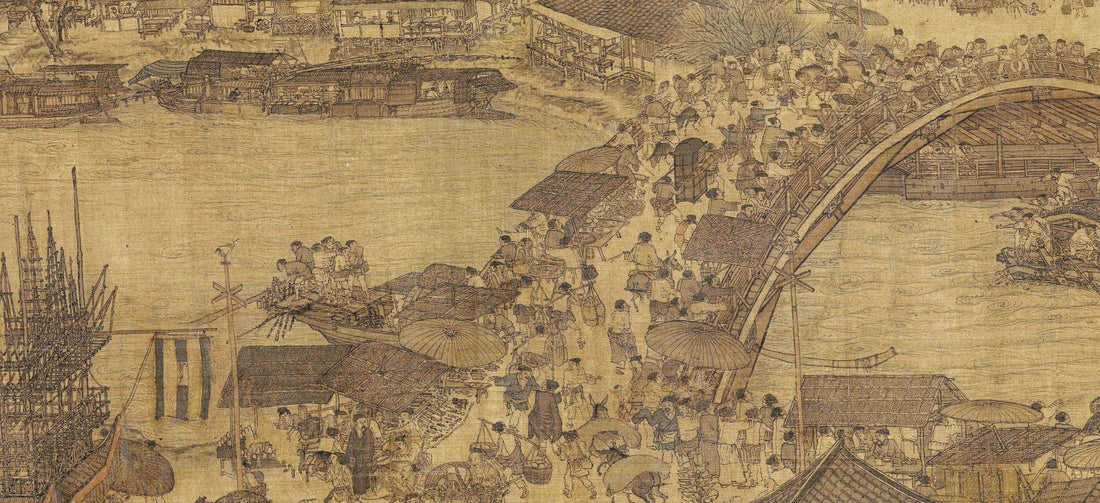
All You Need To Know About “Along the River During the Qingming Festival” Chinese Artwork
Share
The Scroll That Never Stopped Moving
By Qiao Wen, Heritage Advisor of Tang Heritage
Some paintings whisper. Others sing. And then there are those that hum with the breath of a thousand lives.
The first time I encountered Along the River During the Qingming Festival (清明上河图), attributed to Zhang Zeduan of the Northern Song dynasty, I was overwhelmed—not by any single figure or building, but by its sheer vitality. It felt less like viewing a scroll and more like stepping into it. My eyes didn’t know where to rest: every corner was brimming with life, every figure drawn mid-movement, as if I might call out to one and receive a reply.
It is not merely a painting. It is a world, unfolding.
The Tapestry of a Civilization
Completed in the early 12th century, this handscroll offers a sweeping, unbroken vision of Bianjing (present-day Kaifeng), the thriving capital of the Northern Song dynasty.
As I followed the scroll’s five-meter expanse from countryside to city, I felt as though I were walking alongside the painter himself—crossing bridges, peering into tea shops, watching boats drift and turn beneath low-slung arches. Zhang Zeduan was not simply recording a festival. He was preserving a civilization in motion.
More than 800 human figures populate the scene: merchants unloading wares, women carrying children, oxen straining against carts, a bridge arched in the tension of everyday drama. The detail is extraordinary. I remember pausing at a humble food stall, where a man stirs a pot with quiet intent. In that single stroke of ink, I found the intimacy of a life fully lived.
It is a painting that asks for your time—and rewards it with wonder.
More Than a Celebration
Qingming (清明), or "Clear and Bright Festival," is a time of remembrance. A day to honour ancestors, to sweep tombs, to welcome spring. And yet, Zhang’s painting offers more than ritual. It gives us a rare portrait of everyday harmony: a society in rhythm with its rivers, its seasons, and itself.
Each time I return to the scroll, I notice a new moment—an argument on a boat, a child peeking out from behind a curtain, a scholar crossing a narrow bridge with studied calm. These are not symbolic figures. They are people. Their world—structured yet spontaneous—reminds me that elegance is not only in temples or poems, but in the curve of a rooftop, the chatter of a crowd, the turn of a waterwheel.
Rendered in ink and colour on silk, the painting blends architectural precision with emotional warmth. Its spatial logic was centuries ahead of its time. And yet, its true brilliance lies in the ordinary: the way life simply goes on.
From Silk Scroll to Silk Scarf
When we brought Along the River During the Qingming Festival into our Heritage Scarf Collection, the goal was not to condense the masterpiece—but to carry its spirit.
We studied its composition closely, choosing sections that best conveyed the scroll’s progression—from rural quiet to urban crescendo. The palette was preserved with care, and slight enhancements were made to allow the scene to remain legible in motion. What was once read from right to left on a table is now read across the shoulders, in folds and drapes that shift with the body.
The first time I wore the scarf, I saw the city begin again—not in a museum, but on skin. The boats moved. The bridges held. The people walked on.
To wear this scarf is to become part of that living scroll—a participant in a timeless spring day, where remembrance and renewal move side by side.
Walk the Festival Trail in Silk
The Qingming Festival on the River Heritage Scarf is a tribute to Song dynasty ingenuity and human connection.
Limited pieces available. Step into the scroll and wear history with grace.
